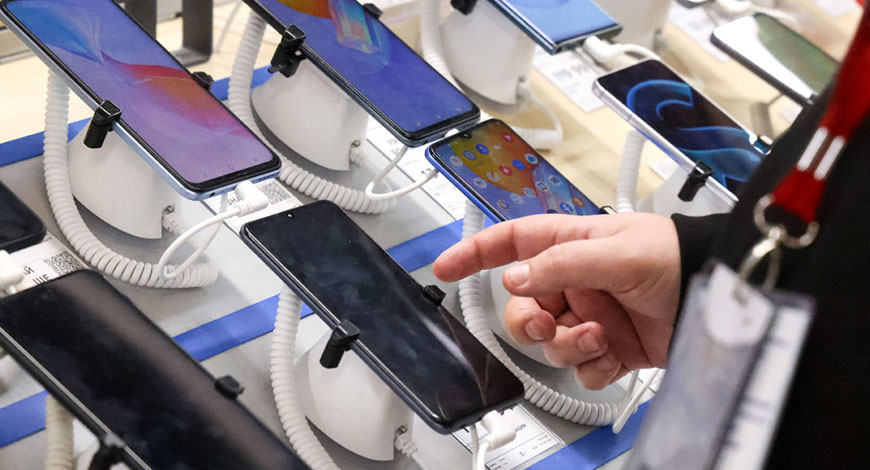Headlines of the Day
Smartphone sales down in CY23, yet retailers’ shipments increased in Q1CY24

For the smartphone industry, it has been a lacklustre quarter of CY2024, with retail sales falling 3-4 per cent over the same period last year, according to Counterpoint Research projections. However, with the launch of many models in Q1 of CY24, overall shipments (to warehouses and sellers) grew year-on-year by 10-12 per cent. In CY23, shipments remained flat, ending the year with 152 million units.
Said Shilpa Jain, senior analyst, Counterpoint: “We are seeing a slow demand period in India’s smart phone market from the beginning of the year. The momentum which one saw in the festival season and even afterwards could not sustain entering this year.”
Jain pointed out that though sales were very slow during January-February 2024, there was some uptick in demand in March around the time of Holi. “After the festival season, the increased replacement cycle and the absence of the government’s money-infusing policies are some of the reasons for the slow demand,” she adds.
Companies expect Q2 of FY25 to be better. “A lot of new phones were launched in Q1, but it takes a bit of time to show in the sales. We will see a positive impact on sales in Q2 and expect it to be better than the previous year,” said a top executive of a leading Chinese mobile phone brand.
The other challenge is the slowdown in the decline of 2G subscribers. This has impacted smartphone sales as the expectation was that these subscribers would quickly upgrade to 4G phones.
According to Counterpoint, the decline of 2G subscribers in 2023 was only 22 per cent over the previous year, compared to 27 per cent in 2022 over 2021. The research agency projects that the decline of 2G subscribers in 2024 will be down by 17 per cent over the previous year.
Siddhant Cally, an analyst dealing with the movement of subscribers in the telecom industry, says: “The earlier dips were significant (in 2019, 2G sales dipped by 45 per cent ), with major low-cost 4G adoption pushing the industry. But it now appears that the transition from non-broadband to broadband subscriptions will require more effort from the ecosystem, as it needs to make further inroads into rural India.”
In terms of market share, 2G phones, which accounted for 54 per cent of the market in 2019, dropped dramatically to 29 per cent in 2021.
But here, too, the momentum of decline has slowed down. In 2022 it had a 25 per cent share, which went down to 20 per cent in 2023. And the projection is that by 2025 it will retain 10 per cent of the market share.
The other challenge for smart phone makers is that many 2G subscribers are choosing to move to second-hand phones, which have many more functions and apps, instead of buying low-end 4G phones with only basic features. As a result, they are extending the time taken to upgrade to new 4G phones at prices of Rs 15,000 and above. Business Standard















You must be logged in to post a comment Login